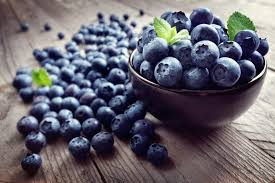Sharing an article '8 Things Your Mind & Body Are Doing While You Sleep'
"You are probably well aware that your body requires adequate sleep every night – ideally around seven to eight hours – to function properly and maintain your health, but you may not realize how much goes on while you are sleeping.
Read on to learn eight surprising things your mind and body are doing while you snooze.
Your Body Temperature Drops Significantly
During sleep, your body temperature drops to reduce the rate at which it burns calories and release melatonin. Melatonin is a hormone that plays a key role in your circadian rhythm.
Toxins are Cleansed
When at rest, the body filters out toxins and clears damaged molecules. These processes allow the body and brain to rejuvenate. Without sufficient amounts of sleep, the brain is unable to purge toxins. This may lead to an increase is neurological deterioration.
You Lose Weight
Throughout the night, you lose weight due to expelling humid air and losing water through perspiration. As opposed to during the day, there is no consumption of food or beverages to offset this effect. This leads to a decrease in pounds by the morning. During sleep, your body also regulates hunger hormones. This means that you are better equipped to fight off junk food cravings if you got an appropriate amount of sleep the night before.
You Dream
Everyone knows the mind creates dreams during the night but you may be surprised to learn how much you dream. We can spend as many as two hours dreaming each night.
You Get Taller
Your body actually experiences an increase in height while you sleep. When you are laying down, the discs in your spine decompress and rehydrate causing them to get bigger and slightly boost your height.
You May Jerk Involuntarily
Whether you sleep alone or with a partner, for many people, falling asleep produces a phenomenon where muscles suddenly contract involuntarily. This creates a sudden jerk. In some cases, it may be noticeable enough to wake you back up.
Your Skin is Boosted
Collagen – a protein that contributes to youthful, healthy skin – is produced at an increased rate while you sleep. It is stimulated by growth hormones that are released as you snooze. Higher levels of collagen promote more resilient, vibrant skin.
You Wake Up – Often
During the night, we actually wake up numerous times – up to 15 – each hour. This usually occurs when we are shifting to a different sleep stage. The periods of wakefulness are usually so brief that we do not remember them.
Final Thoughts
Getting an adequate amount of sleep is a crucial component of good health. Given all the health benefits and the fascinating facts mentioned above, make a point to get a solid chunk of sleep each night. To increase your odds of getting deep, restful sleep, avoid caffeine too close to bedtime, keep your room dark, and skip screen time prior to hitting the pillow."Above words from article here
Share your thoughts
I know we dream each night, sometimes I remember dreams but often I don't, do you remember your dreams?
It was interesting to read about 'you may jerk involuntary' as this has happened to me and I invariably wake myself up! Have you experienced this?
I am fortunate that I do not have any problems sleeping, I know that many do.
Related Posts
Simple Steps To A Better Night's Sleeps : Five Suggestions - read it hereSix Bedtime Teas That May Help You Sleep - read it here
We bring a variety of articles, studies etc. plus recent news/views and recipe ideas to this blog, we hope something for everyone to read and enjoy. Please note, not all may be suitable for you. If you may have any food allergies, or underlying health issues these must always be taken into account. If you are a diabetic and not sure how certain foods may affect your blood sugars, test is best, i.e. use your meter.
All the best Jan






































